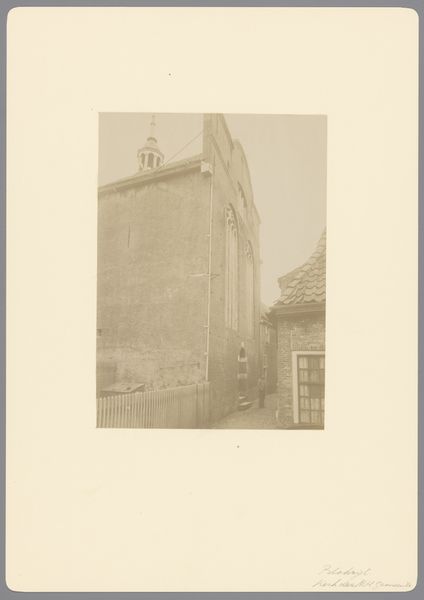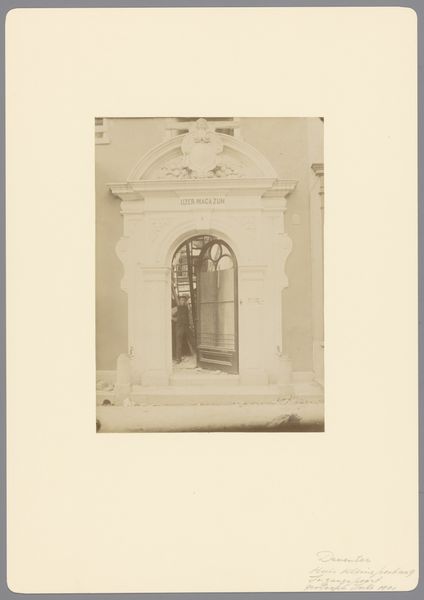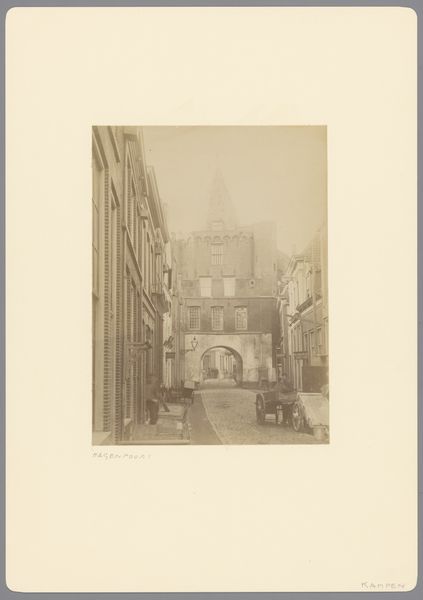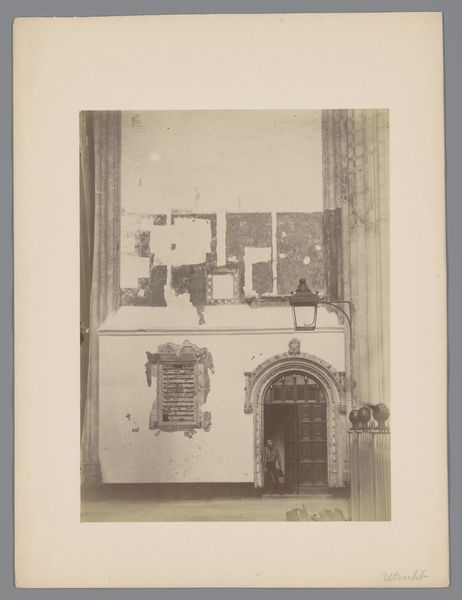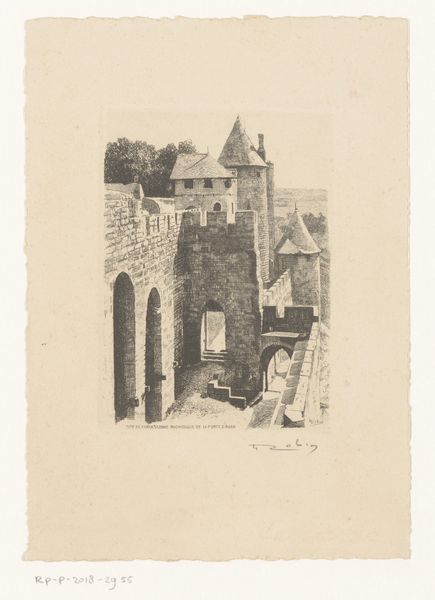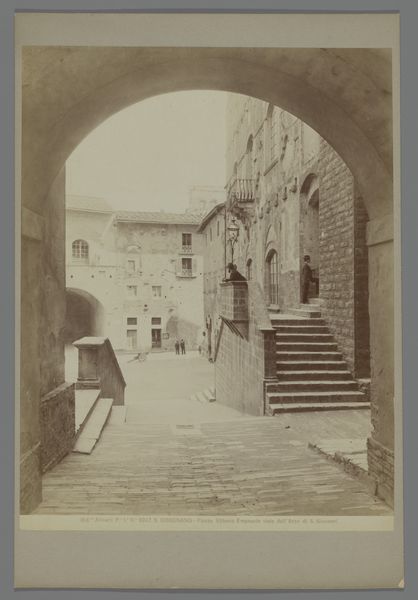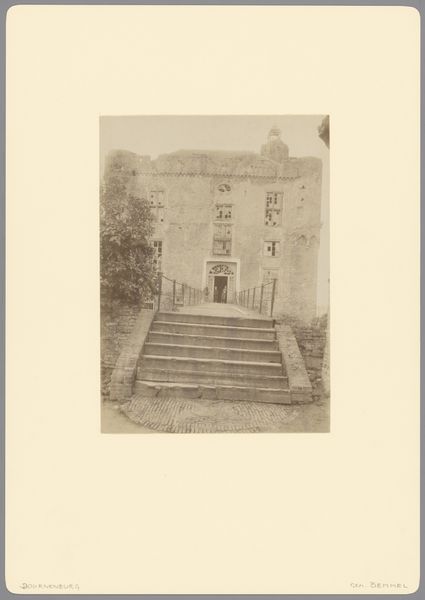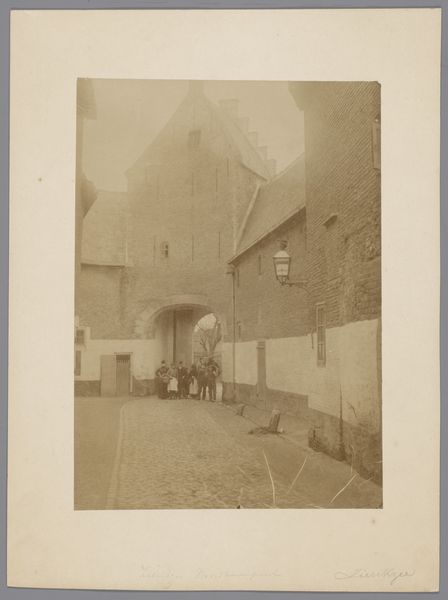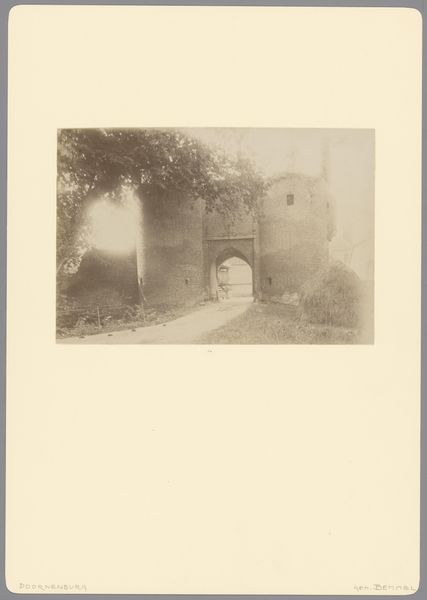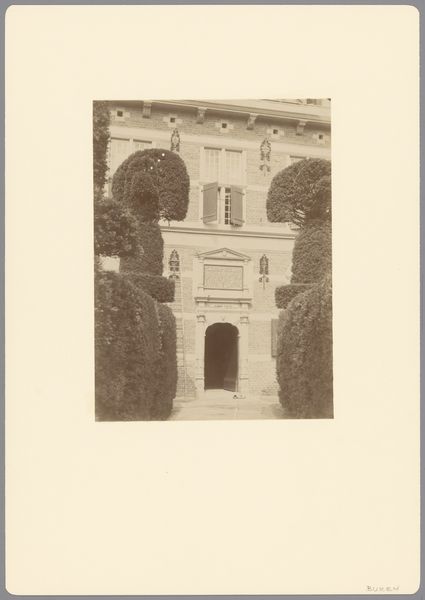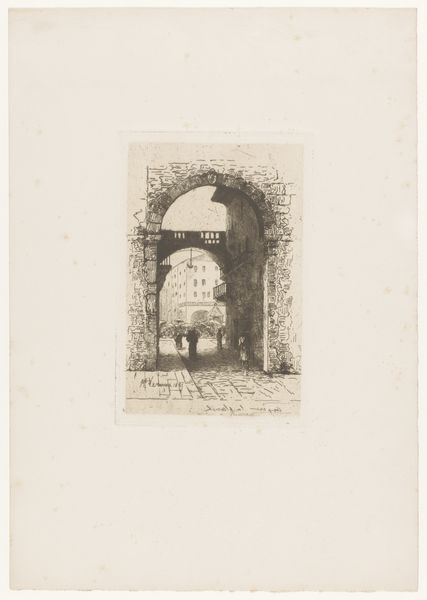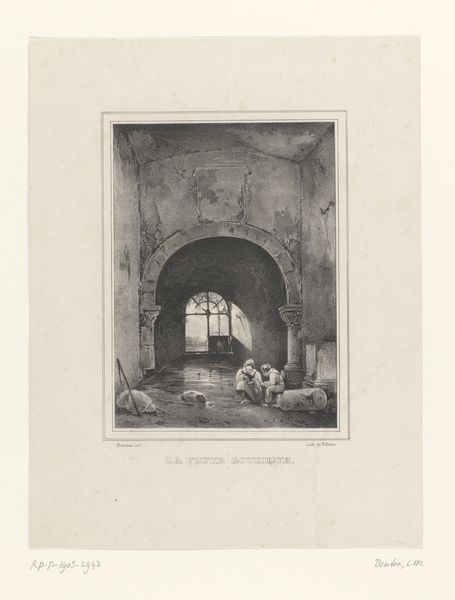
Dimensions: height 226 mm, width 170 mm
Copyright: Rijks Museum: Open Domain
This photograph captures the entrance of the orphanage in Kampen, revealing a façade adorned with symbols of civic responsibility and communal identity. Above the arched doorway, you'll notice two figures flanking a coat of arms. These figures are a clear reference to the governors who were charged with the wellbeing of the institution. Consider this grouping in light of similar motifs found across Europe, where figures of authority are often depicted guarding or supporting shields or emblems. We may trace its origins back to ancient Roman depictions of emperors flanked by their consuls or generals. The coat of arms signifies the collective identity and values of the orphanage. Such symbols were not merely decorative; they served as a potent reminder of the social contract between the institution and the community it served. Over time, such emblems have appeared in various forms, adapting to reflect evolving social structures. These motifs speak to our collective memory and a subconscious desire for stability and communal connection. These symbols have resurfaced and evolved, constantly renegotiating their meaning within different historical contexts.
Comments
No comments
Be the first to comment and join the conversation on the ultimate creative platform.
